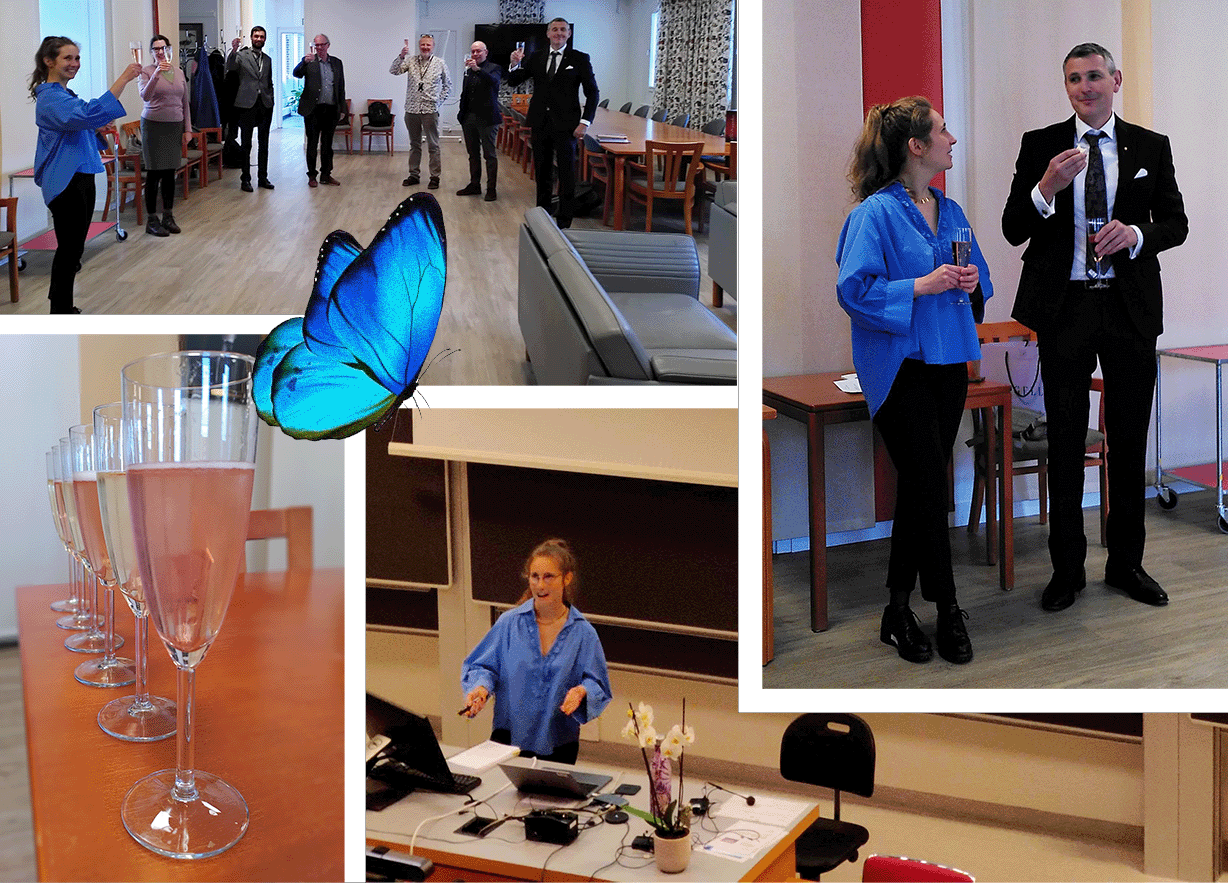POSTS
Metamorphosis - when changing conformation is the key
It’s almost 9 a.m. on the 10th of October. The crowd in the B21 lecture hall enjoy their morning coffee, chatting quietly while waiting for the spectacle to begin. The opponent of today’s defense, Prof. Victor Muñoz takes the floor and gently introduces the audience to today’s topic - Mechanisms for transcription factor target search. The stage is now set and ready for Malin to present her PhD work. If she is nervous, nothing is giving it away. She owns the stage, guiding us through her scientific discoveries like this is something she does every day. Even so, there’s a hint of relief on her face when the question session is over. There’s no doubt Malin passed her defense with credit, but we still fake looks of nervous excitement when the committee enters the room where we’ve gathered afterward to celebrate (prematurely) with cheese and pink champagne. Finally, Dr. Lüking enjoys a glass of bubbles with Johan Elf, previously her supervisor but now a fellow doctor. Congratulations Malin!

In her thesis work, Malin studies how the bacterial transcription factor LacI can achieve both fast and stable repression of its operon in the E. coli cell. The lac repressor LacI selectively binds to a specific DNA sequence with such a high affinity that it remains bound for several minutes. When interrogating unspecific sequences, e.i. the rest of the millions of sequences in the genome, LacI only interacts fractions of a second, allowing it to rapidly sift through DNA in search of its target. How is this duality achieved?
Malin carefully examines the different search mechanisms with coarse-grained molecular dynamics (MD) and all-atom MD simulations. The studies focus on the role of the so-called hinge region, which is alpha-helical when LacI interacts with the target DNA, but unstructured in the non-specific protein-DNA complex. In her work, Malin shows that the flexibility of the hinge region holds the key to switching between fast search and stable binding. Guided by her simulations, Malin creates LacI proteins with mutations in the hinge region designed to influence the LacI search speed and stability of the specific LacI-DNA complex. The predicted behaviors of the LacI mutants are confirmed in in vitro experiments.
The work in its entirety can be found here: